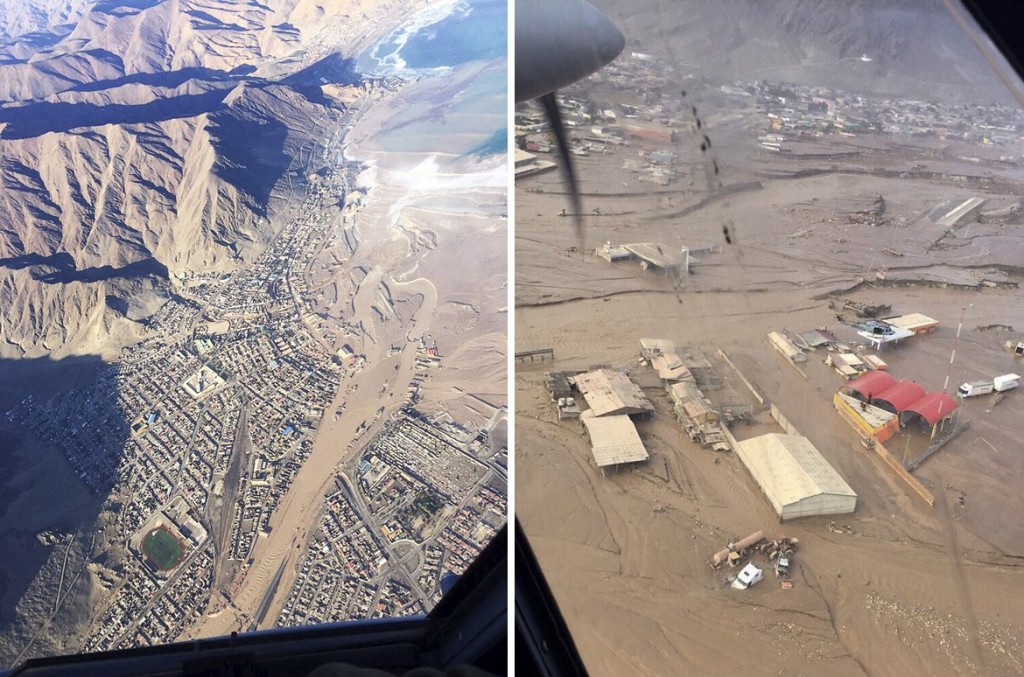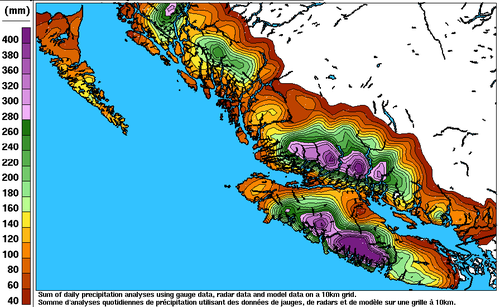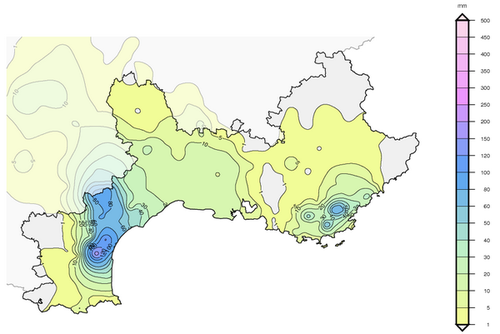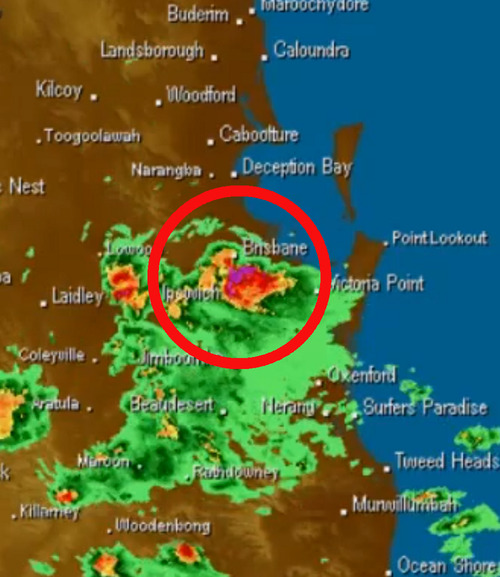Rare Rainfall Event Strikes Chile
A rainfall event that occurred near the end of March in Northern Chile did some major damage to numerous towns in the region. The storm system that brought the rain was the product of an upper level low that remained nearly stationary for several days in the area. The rainfall amounts, which might seem insignificant to Manitobans, are significant for that area because the storm system brought rain to one of the few places on the planet that receives very little precipitation every year – the Atacama Desert.
[map autofit=”1″ disable_scrollwheel=”1″][pin]Santiago[/pin][pin]Antofagasta[/pin][/map]The flooding and mud flow event affected about 30,000 Chileans and destroyed 5,900 houses. In the hardest hit regions only about 65mm of rain fell, but due to the extremely dry soil conditions in the region – which have trouble letting rainfall percolate through – flooding occurred. According to Wundergroud meteorologist Jeff Masters, Antofagasta recorded 24.4mm of rain in 24 hours while their average precipitation per year is 3.8mm. Santiago, Chile recorded 35.7mm of rain during the event, which is a significant amount in comparison to the 6mm total rainfall they typically receive during the entire month of March.

The flooding rains triggered flash floods which swept away cars, houses and washed away one of Chile’s main highways in 3 places in the normally arid part of northern Chile. In total, 24 people have perished from this event and there are still over 50 that are missing where the mud flows occurred. Rescue efforts are still ongoing for people in remote locations and the cleanup in the towns has begun as 7,000 troops have been brought in.
In other news, the Philippines are expecting typhoon Maysak to make landfall this weekend. Maysak was once a super typhoon (category 5) but has since encountered cooler waters of the Western Pacific and has weakened to a category 1 typhoon as of Friday night. The main risk with this storm is the heavy rainfall that it will bring to the Northern Philippines.





